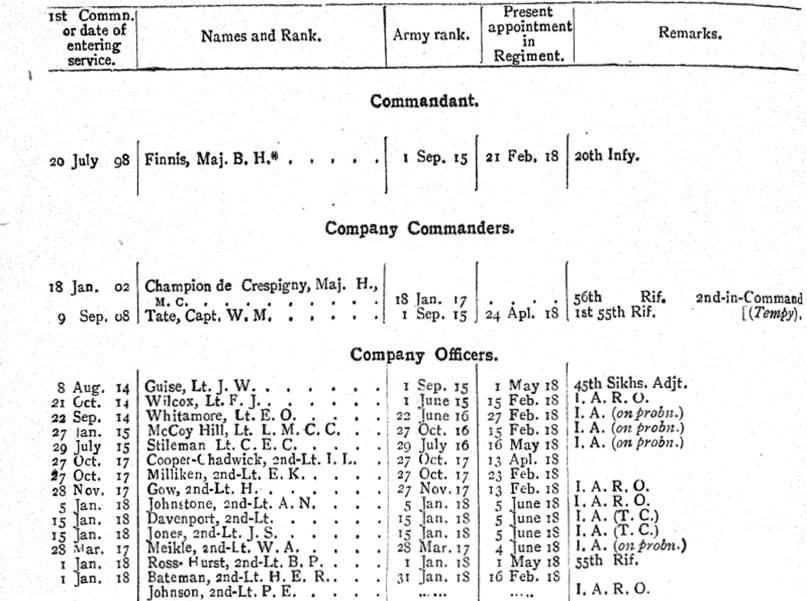This article on the war-raised 2nd Battalion 55th Coke’s Rifles (Frontier Force) aims to help you research the Battalion or a soldier who served with it during the First World War. I have written a separate article for the 1st Battalion 55th Coke’s Rifles (Frontier Force) and a series of guides to help you find out even more about researching someone who served in the Indian Army. The links below will take you to the guides:
- Guide to the 1st Battalion 55th Coke’s Rifles (Frontier Force)
- Guides to Researching Soldiers who Served in the Indian Army
The 2nd Battalion 55th Coke’s Rifles (Frontier Force) in the First World War
Lineage: The 2nd Battalion 55th Coke’s Rifles Frontier Force was formed at Ambala on 16 February 1918. For a history of the Regiment’s lineage see my page on the 1st Battalion 55th Coke’s Rifles (Frontier Force).
Class Composition of Battalion in 1919: 8 platoons of Cis-Frontier Pathans, 4 platoons of Sikhs, 2 platoons of Dogras and 2 platoons of Punjabi Hindus.
The 2nd Battalion 55th Coke’s Rifles was a short-live Indian infantry battalion formed at Ambala on 16 February 1918. The Battalion served as part of Northern Command, and subsequently in Hong Kong before it was disbanded. The Battalion’s first commanding officer was Acting Lieutenant-Colonel Benjamin Hubert Finnis, who was appointed from the 20th Punjabis on 21 February 1918. Finnish was a long-serving Indian officer who had first been commissioned on 20 July 1898, and had seen service in the Boxer Rebellion. The Battalion was inspected on 13 February 1919, where it received a good report:
Colonel W. E. A. Balakeney, Commanding Delhi Brigade: The battalion is well administered. The men play up, which shows they are happy and contented, which is the foundation of a good regiment. I consider that the battalion is in an excellent state, the men are of good physique. All ranks are very keen. The regiment is well commanded and well officered by a keen and capable set of officers. The Native officers also are generally good and capable of taking their fair share of command. The regiment has improved enormously in the last three months in my opinion. Not up to pre-war standard as only been raised a year. Will be up to pre-war standard in another year.
Major-General O. S. W. Nugent C.B, D.S.O., Commanding Meerut Division: The regiment is well commanded and drills well. Like many other new units it has spent so much time on the drill ground that its training in field operations is still in the elementary stage.
Confidential review reports on Indian Army units, depots, British officers, etc. for 1918-1919: IOR/L/MIL/7/17030
The Battalion received another good report when it was inspected again in March 1920. During this report it was noted that “When inspected, regiment was under orders for Hong-Kong, and all the men were on furlough”. When the Battalion served at Hong Kong it left its Depot at Campbellpore (Attock, Pakistan). The Battalion was disbanded either in 1922, or 1923. The extract below was taken from the July 1918 Indian Army List and recorded the British officers serving with the Battalion.
War Diaries of the 2nd Battalion 55th Coke’s Rifles (Frontier Force)
Unfortunately, there are no war diaries for the 2nd Battalion 55th Coke’s Rifles (Frontier Force).
Further Sources for the 2nd Battalion 55th Coke’s Rifles (Frontier Force)
For information regarding British and Indian officers who served with the 2nd Battalion 55th Coke’s Rifles, the Indian Army List should be consulted. Confidential reports for the Battalion are held at the British Library: Confidential Reports on Regiments etc. IOR/L/MIL/7/17007-17037. These reports also contain the confidential reports of the British officers serving with the Battalion.

